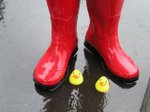 So often, unsurprisingly, we find ourselves employing metaphors of artistry when it comes to a well-crafted book. Writers "weave" narratives, "paint" images, and, yes "craft" at all. Similarly, I recently wrote about a book's machinery. And all this is high praise, really, to liken a writer to an artisan. But then Elizabeth Hay's Late Nights on Air manages to surmount such praise-- "seamless" is the best crafting metaphor I can think of. This book feels too whole to have been created, too perfect. Late Nights on Air is an entity unto itself, its own world, and a truly magnificent literary achievement.
So often, unsurprisingly, we find ourselves employing metaphors of artistry when it comes to a well-crafted book. Writers "weave" narratives, "paint" images, and, yes "craft" at all. Similarly, I recently wrote about a book's machinery. And all this is high praise, really, to liken a writer to an artisan. But then Elizabeth Hay's Late Nights on Air manages to surmount such praise-- "seamless" is the best crafting metaphor I can think of. This book feels too whole to have been created, too perfect. Late Nights on Air is an entity unto itself, its own world, and a truly magnificent literary achievement. The story is set among a group of people working at a small Yellowknife radio station in 1975. Indeed this is the True North, but not like we might imagine: "It was north of the sixtieth parallel and shared in the romance of the North, emanating not mystery but uniqueness and not right away. It had no breathtaking scenery. No mountains, no glaciers, in the winter not even that much snow." Sound, not sight, becomes the salient sense, which is natural with the radio, and Hay creates this effect beautifully. Admirably too, for it is hard to write sound. And not just those voices in the night, but also snow crunching underfoot, paddles in the water, crackling fires and birdsong. Truly, this is the most audible novel I have ever read.
The story, quite simply, tells what happens when a various group of people come together in this strange and isolated place. The enigmatic Dido, whose voice causes some people to fall in love with her, and whose presence does others. Harry Boyd, a washed-up has-been, managing the station as part of his demotion. Gwen, who is too young and arrives in town with a bruise on her throat. Eleanor Dew, the station receptionist, the steadying force. Relationships are entered in and out of, loyalties shift in surprising ways. Each of these characters come with their own unwavering backstories, and point-of-view shifts between them with such fluidity. Similarly the story moves back and forth in time in a way that feels only natural, demonstrating Hay's remarkable skill without actually making us aware of her at all.
The final third of the book tells of a modified version of our original group heading out on a six week canoe trip through the barrens. Though the travellers are light-hearted in their preprarations, a sense of foreboding pervades and clearly something bad is going to happen. And though what does happen is as devastating as one might expect, I found myself quite impressed with how deftly this event had been established, with a lack of emotional manipulation or gratuitous sensation. Also with how rivetted I remained to the story as the group made way along their journey-- I tend to like stories that happen in places, usually urban places, but so attached I was to these characters that my attention never faltered as they portaged and canoed for days, sometimes seeing no other living creature but a single ptarmigan or a caribou.
Such is the story then, though what's it about? It's about people, and all that their presence entails. It's about love and longing, otherness and belonging, bookishness and radio, seasons and change. It's about Canada, and universality, and goodness, and less-than goodness. It is also an absolutely beautifully designed book, and I'd encouraged you to pick it up in hardback if you could. A nice compact shape and gorgeous cover art. And what's inside is stupendous. Such a fitting title as the narrative felt weightless, but yet simultaneously substantial. Reading was an absolute pleasure.

